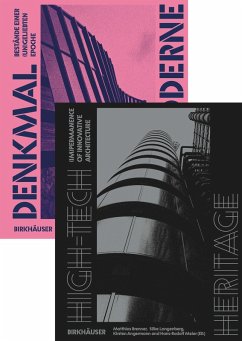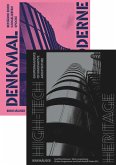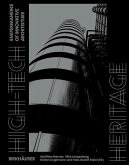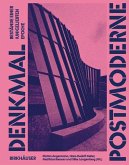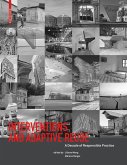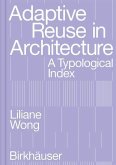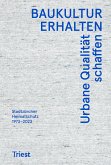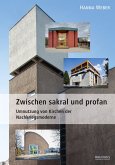HIGH-TECH HERITAGE AND DENKMAL POSTMODERNE IN THE SET - CURRENT STATE OF SCIENCE AND MONUMENT PROTECTION IN TWO CONGRESS VOLUMES Denkmal Postmoderne The architectural heritage of postmodernism bears witness to an era that was defined by the energy crises of the 1970s, the return to architecture as a means of communication and a conduit of meaning, neoliberalism in the construction sector, the end of grand narratives, and the spirit of optimism in the early 1990s. Focusing on the German-speaking world, this volume reveals how this heritage can be captured, preserved and further developed. It includes contributions from the conference of the same name, which took place in Weimar in March 2022 in collaboration with ETH Zurich. The authors shed light on the theoretical and practical challenges of dealing with an era that is subject to a wide range of qualitative perceptions and is - as its name suggests - still ongoing. * Current state of research on postmodern architecture and its preservation * New findings on the topic of building within existing structures * Research reports in German with English summaries of each High-Tech Heritage The high-tech architecture of the 1970s-1990s is typically characterized by the use and exhibition of advanced technologies. In terms of appearance, these buildings often have innovative façades, supporting structures accentuated in color, and expressively displayed technology systems. Unfortunately, however, the rapid obsolescence of technology has often led to the complete replacement of the very systems that defined the architectural form. In 2023, an international conference at ETH Zurich in collaboration with Bauhaus-Universität Weimar explored the question of how best to deal with the structural legacy of technologically innovative architecture. This book summarizes the results and provides an overview of the current state of research. * Current state of research on high-tech architecture and its conservation * Overview of the opportunities and challenges of high-tech buildings * New findings on the topic of building within existing structures
Hinweis: Dieser Artikel kann nur an eine deutsche Lieferadresse ausgeliefert werden.
Hinweis: Dieser Artikel kann nur an eine deutsche Lieferadresse ausgeliefert werden.
